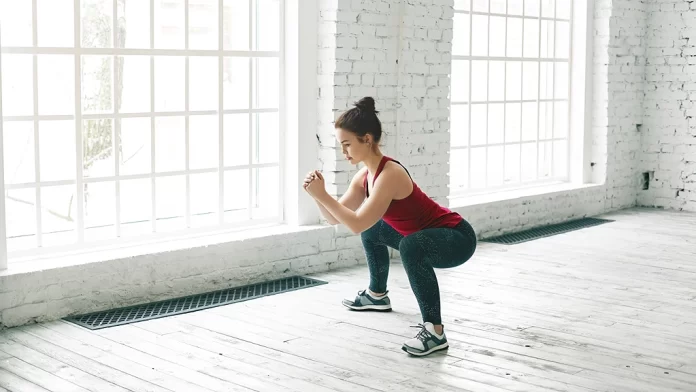When experiencing lower back pain, many people find themselves tempted to rest and avoid physical activity. However, did you know that movement and exercise can actually be beneficial in relieving symptoms and preventing future episodes of back pain? That being said, if your pain is severe or lasts more than 15 minutes during exercise, you should stop and consult with a doctor.
Signs And Symptoms Of Low Back Pain
Symptoms of low back pain can vary, from mild to very severe, sometimes it can even spread to the feet. Depending on the underlying cause of the pain, symptoms can be experienced in a number of ways, such as:
• Pain or soreness in the lower back area
• Stinging, burning pain, radiating from the lower back down the back of the thigh, sometimes down the lower leg or foot; can include numbness or tingling (sciatica pain)
• Muscle spasms and tightness in the lower back, pelvis and hips
• Pain that worsens after prolonged sitting or standing
• Difficulty standing up straight, walking, or changing from standing to sitting.
Causes of low back pain
Several factors can cause low back pain, including:
-
Muscle stiffness
If you spend a lot of time in bed and on the couch, you will wake up with a tight lower back most mornings.
• Inflammation of the joints (arthritis)
In some cases, arthritis can cause narrowing of the joints and vertebrae, causing pain.
• Deformity and osteoporosis of the spine
Spinal deformities, such as kyphosis and bone loss (osteoporosis) can put pressure on nerves and cause pain.
• Disorders of the spinal cord
This condition can result from inflammation, pressure, injury, or a tumor pressing on the spinal cord.
• Sprain
Sprains can be caused by a number of factors such as lifting heavy objects, falls, poor posture over time and sports injuries.
Standing Core Workout to Overcome Low Back Pain
Treatment for low back pain usually depends on the cause and severity of the pain. Some common treatments include rest, painkillers, physical therapy, massage therapy, and surgery if needed. However, it is best to consult a doctor if you experience severe or long-lasting low back pain, especially if it is accompanied by other symptoms such as tingling or weakness in the legs.
If the back pain you are experiencing is often caused by having a lack of mobility and tightness in your hips and legs, then strengthening and loosening those muscles can help ease the pain. It is highly recommended to do exercises that focus on core strength, posture, stability and flexibility to relieve back pain.
How to Do This Workout
Below is a series of exercises that can be done any day you feel lower back pain. There are two purposes of this workout. Perform 3 sets of each strength exercise for 60 seconds each. Then, perform 2 sets of the mobility exercises for 60 seconds each. Rest for 30 seconds between each set.
Adding light weights to some of these exercises can increase their difficulty and effectiveness, but using your own body weight is also a great option. It’s important to listen to your body and move at a pace that feels comfortable for you. This workout should take around 10 minutes, but it’s important to take the time you need to complete each exercise correctly.
Remember, consistency is key when it comes to building strength and mobility, so try to make this workout a regular part of your routine to see the best results.
Things You’ll Need
-An exercise mat
-Optional: 1 light dumbbell (2.5 to 5 pounds)
1. Pelvic Tilt
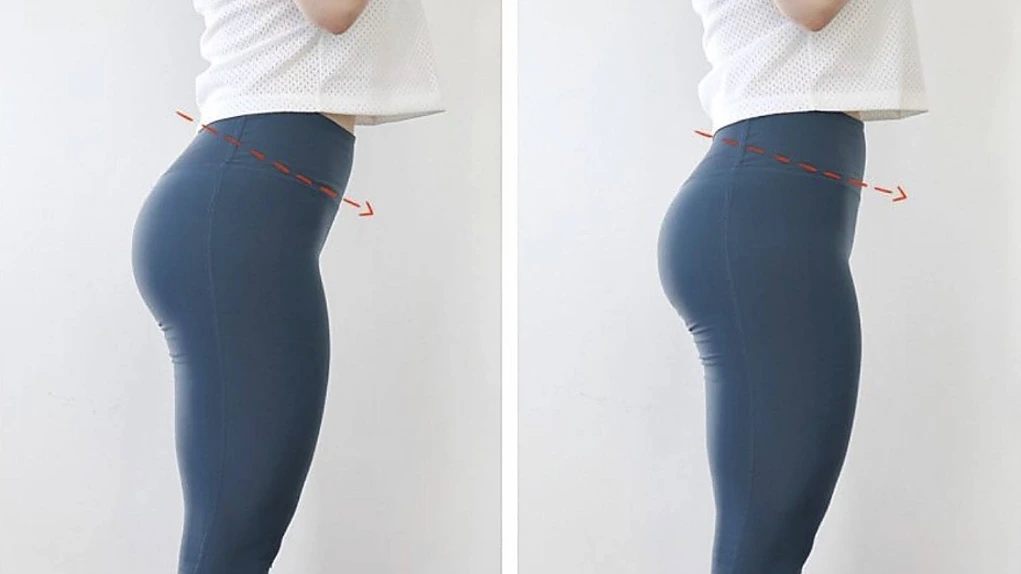 SETS: 2
SETS: 2
TIME : 1 Min
Stand with your feet hip-width apart. Place your left hand on your lower back and your right hand on the front of your right hip bones.
1. Begin by tightening your core.
2. Pull your hips slightly forward and draw your rib cage down.
3. Hold for 1 to 2 seconds.
4. Return to starting position (neutral).
5. Repeat for 60 seconds.
Tip:
You can also perform this exercise on a wall. Place your back against a wall with a slight bend in your knees. Push your back against the wall. Hold for 1 to 2 seconds and return back to neutral.
2. Squat to Lateral Leg Lift
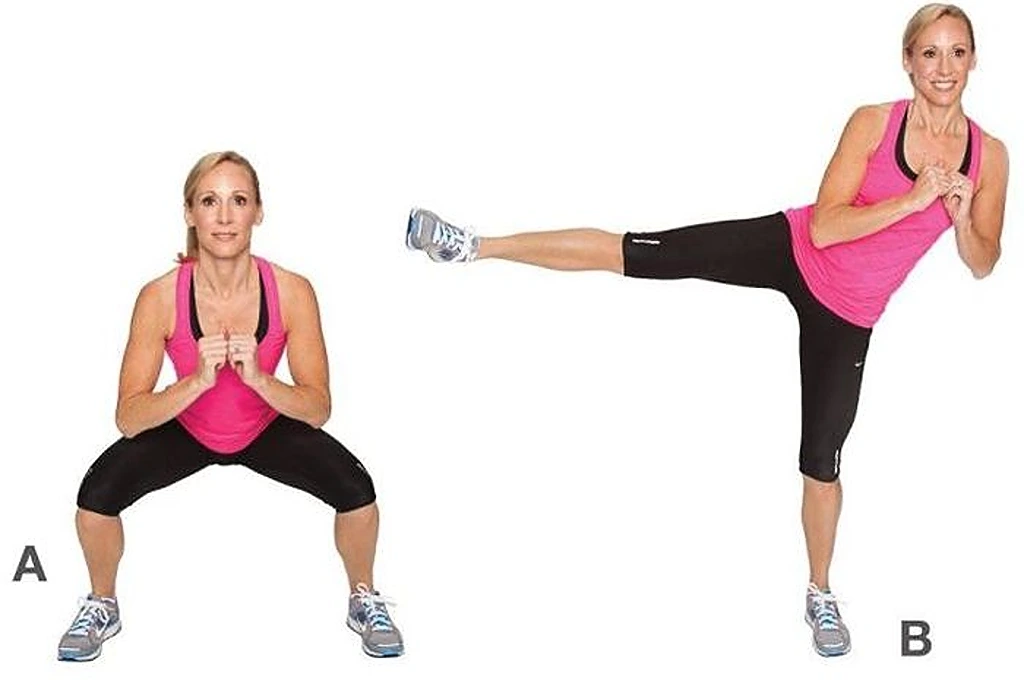 SETS: 3
SETS: 3
TIME: 1 Min
1. Stand tall with your feet hip-width apart and brace your core. Focus on keeping your feet rooted into the ground and your core tight the entire time.
2. Clasp your hands in front of your chest and slowly bend your knees as you push your hips back to lower toward the floor into a quarter squat.
3. Reverse the motion by pressing through your heels to return to standing.
4. Squeeze your glutes and lift your right leg away from your body.
5. Bring your right leg back down and descend into your quarter squat again.
6. Reverse the motion by pressing through your heels to return to standing.
7. Squeeze your glutes and lift your left leg away from your body.
8. Bring your left leg back down and descend into your quarter squat again.
9. Repeat, alternating sides, for 60 seconds.
Tip:
If you start to feel back pain, perform the squat and the leg lift as two separate exercises (or stop the exercise altogether)
3. Reverse Lunge with Twist
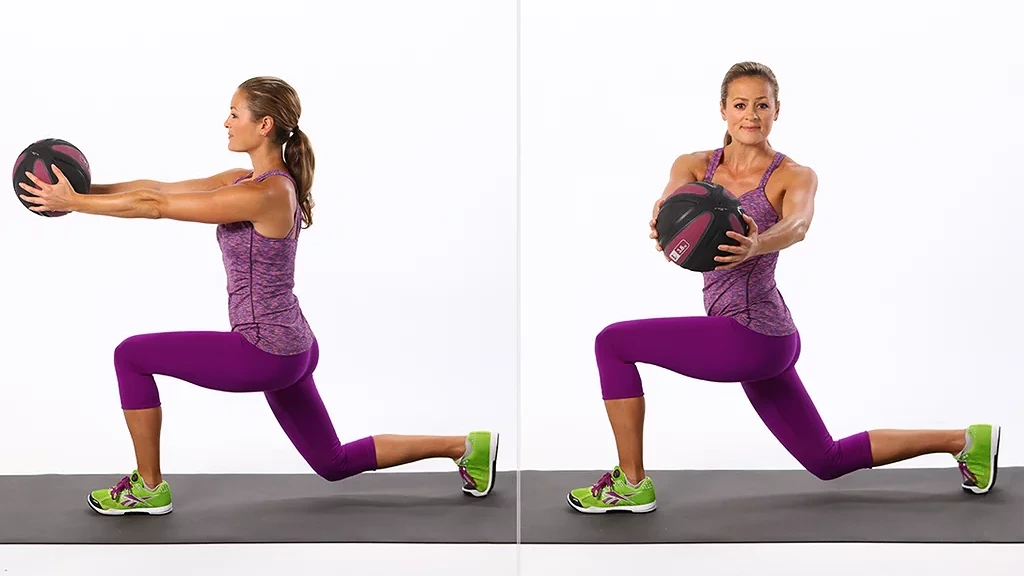 SETS: 3
SETS: 3
TIME: 1 Min
1. Stand straight with your feet shoulder-width apart and your toes pointed forward.
2. Move your right leg back behind your body while simultaneously bending your left knee and lowering your hips. Keep your torso straight.
3. Stop when your left knee is at a 90-degree angle and your left thigh is parallel to the floor.
4. Twist your torso to the left, then to the right.
5. Press into your left heel, squeezing your glutes to stand up, while bringing your right leg back to the starting position.
6. Repeat, alternating which leg you lunge with, for 60 seconds.
Tip:
Really take your time with the twists in this exercise. You want to perform the twist from your upper back. If you start to feel pain, eliminate the twist and just perform the reverse lunge (or stop the exercise altogether)
4. Wood chop
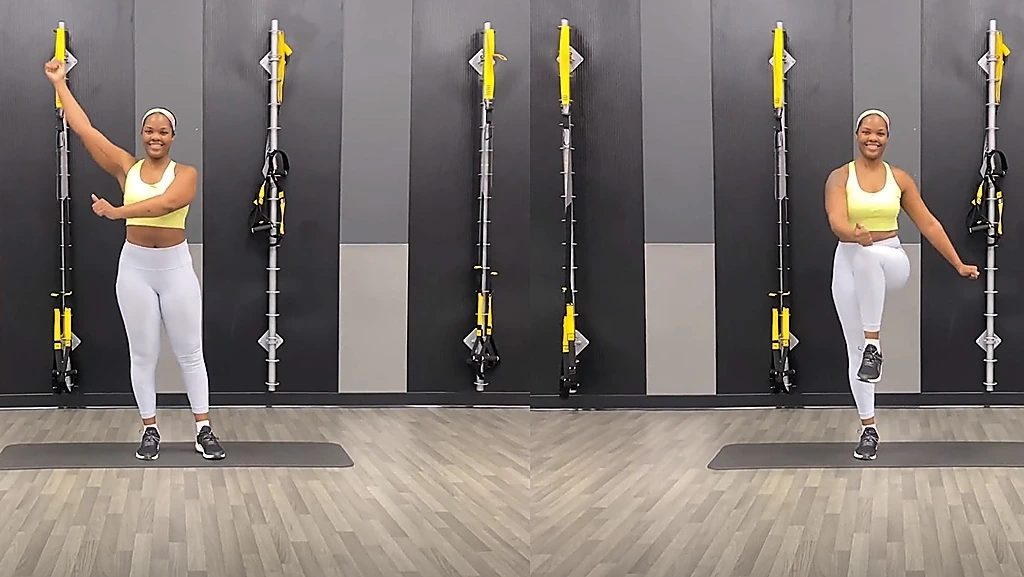 SETS: 3
SETS: 3
TIME: 1 Min
1. Stand with your feet hip-width apart.
2. Raise your right arm straight up above your head.
3. Cross your left arm across your torso with your elbow straight.
4. Drive your left knee up and bring your right arm down, so your left knee and right hand meet. At the same time, move your left down to your left side.
5. Return to starting position and repeat.
6. Repeat on one side for 30 seconds then switch to the other side for 30 seconds.
Tip:
If you don’t have the balance to stand on one foot, keep your legs stationary and just perform the wood chop motion with your arm, with either variation, don’t over-twist your upper body while you’re chopping.
5. Windmill
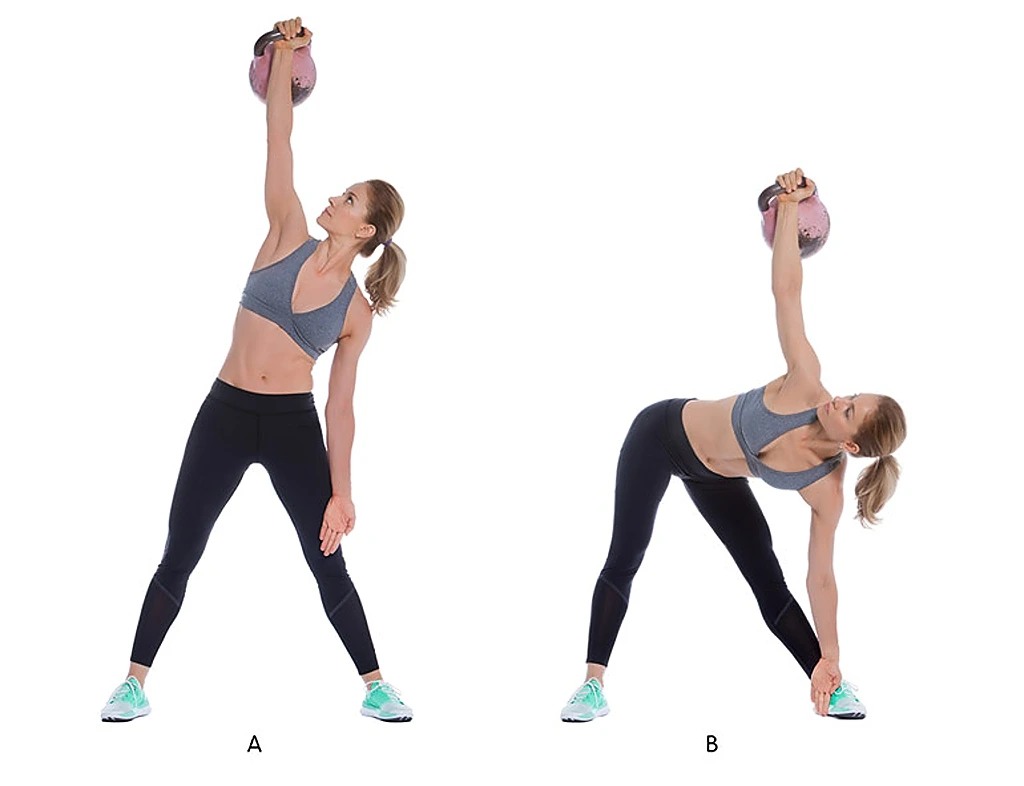 SETS: 2
SETS: 2
TIME: 1 Min
1. Stand with your feet shoulder-width apart.
2. Point your right foot out about 45 degrees.
3. Keep your arms down at your sides, palms and forearms facing up.
4. Brace your core, and push your hips to the left side as you slide your right arm down your right leg.
5. Keep your right leg straight; you can bend your left knee a little as you lower.
6. As your right arm goes down, your left arm comes up; keep your gaze up toward your left arm.
7. Keep lowering as far as you can without putting pressure on your front leg or bending your spine, reaching your right arm towards your right ankle. You should feel a stretch in the hamstring of your right leg.
8. When you’ve lowered as far as you can, squeeze your glutes to reverse the motion and stand back up.
9. Repeat on one side for 30 seconds then switch to the other side for 30 seconds.
6. Statue of Liberty
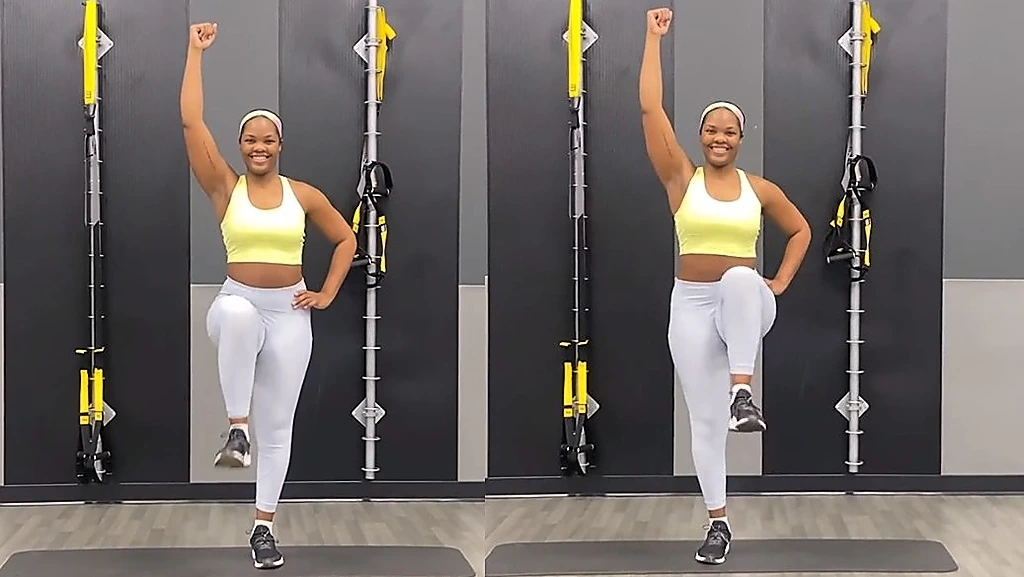 SETS: 3
SETS: 3
TIME: 1 Min
1. Stand with your feet together, your right arm straight up above your head and your left hand on your left hip.
2. Drive your left knee up toward your chest, then lower it back down to the floor.
3. Drive your right knee up toward your chest, then lower if back down to the floor.
4. Continue alternating knees like you’re marching in place for 60 seconds.
Tip:
This exercise will challenge your balance and core strength. To make this exercise easier, keep both hands on your hips and march in place.
*Remember to listen to your body and stop any exercise that causes pain. If your lower back pain persists, it’s important to consult with a medical professional.
When you make exercise a regular part of your routine, you’ll help to ease your low back pain and build strength and mobility. So why not give this workout a try today?


